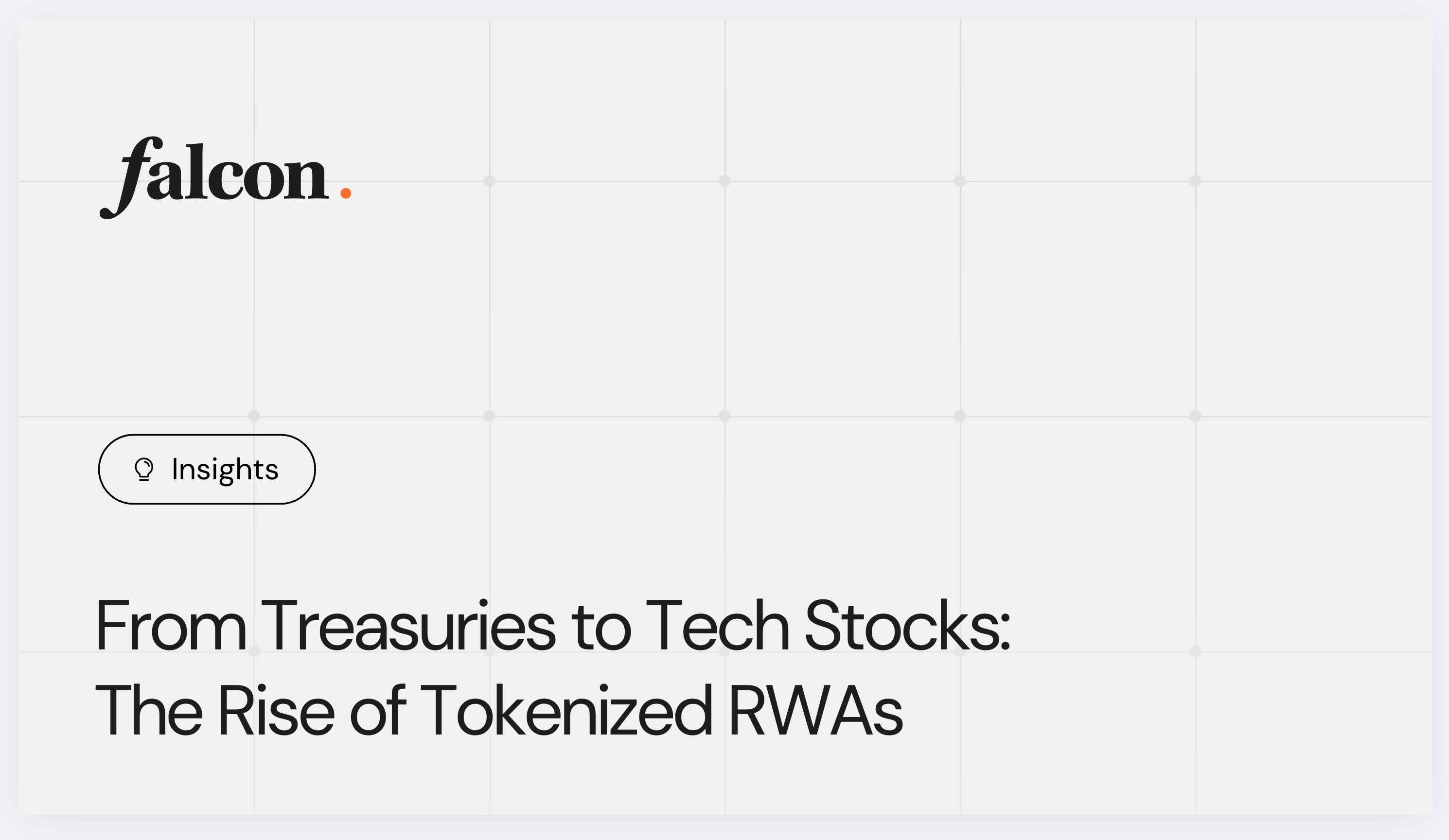From Treasuries to Tech Stocks: The Rise of Tokenized RWAs
Published • 9 Sept 2025
3 mins

Tokenization of real-world assets (RWAs) is moving from early adoption to mainstream financial markets. What began with stablecoins and U.S. Treasuries is now extending into equities, with Nasdaq filing with the U.S. Securities and Exchange Commission (SEC) to offer tokenized stock trading alongside traditional equities.
This shift signals that tokenization is no longer limited to crypto-native projects. It is being tested by the institutions at the center of global capital markets.
The strongest growth to date has been in tokenized U.S. Treasuries, which have surpassed $7.4 billion in value on-chain, contributing to a broader $26.4 billion RWA market. This rapid expansion reflects investor demand for short-term government debt that can settle instantly and remain transferable around the clock. For institutions, the appeal is clear: Treasuries provide recognized collateral and blockchain brings faster settlement and easier access.
Equities are following this path. Earlier this month, Galaxy Digital partnered with Superstate to tokenize its own stock on Solana, converting Class A shares into tokens while preserving shareholder rights. More than 32,000 shares have already been issued on-chain, making this one of the first examples of tokenized equity with full regulatory recognition.
Nasdaq’s SEC filing would scale this further. If approved, investors could trade companies like Apple or Microsoft either through legacy systems or as Nasdaq blockchain assets. Tokenized orders would carry equal execution priority as traditional ones, while clearing and settlement would remain with the Depository Trust Company. Ownership and transactions would also be recorded on a digital ledger, offering greater transparency over how shares move between participants.
For Falcon, these developments confirm that the most important factor in tokenization is not the technology itself but the liquidity around it. Stablecoins showed that dollar settlement can work at a global scale. Tokenized Treasuries demonstrated that yield-bearing government bonds could be made accessible on-chain. Now tokenized equities highlight that even the most established exchanges see blockchain as a viable method of trading and recordkeeping.
The question that remains is whether these assets can trade with the same efficiency as their traditional counterparts. Tokenization will only succeed if markets remain deep, spreads stay tight, and participants can transact without friction. That is why Falcon is building universal collateral infrastructure and synthetic dollars such as USDf and sUSDf. These tools allow tokenized assets to be converted into liquidity that is transparent, transferable, and integrated across protocols and institutions.
Looking ahead, regulatory frameworks such as MiCA in Europe and the emerging U.S. legislation focused on digital assets will give tokenized RWAs clearer legal foundations. Once those rules are in place, the universe of assets will expand: from corporate bonds to real estate and commodities. Each step will broaden the use of blockchain in mainstream finance.
The growth numbers already make the trend hard to ignore. From $7.4 billion in tokenized Treasuries to tens of thousands of tokenized equity shares, RWAs are no longer theory. They are becoming an operational part of financial markets.
The next phase will depend on liquidity — the ability for these assets to trade reliably, across geographies and time zones, with the same trust that institutions expect from today’s markets.